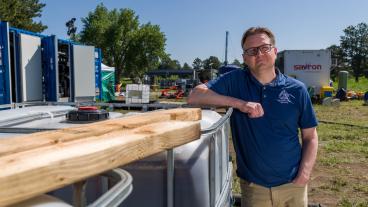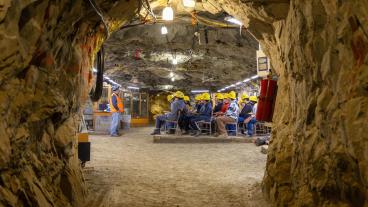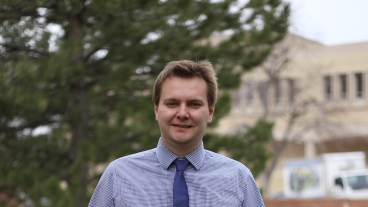Colorado School of Mines is combining its strengths in nuclear engineering and additive manufacturing in a research project to determine how 3D-printed metals perform in a reactor.
Metallurgical and Materials Engineering Associate Professor Jeffrey King, a core faculty member of Mines’ Nuclear Science and Engineering Program, is the principal investigator on the $2.5 million project, funded through several Department of Energy nuclear programs.
The project recently reached a critical point, with 288 samples of stainless steel and Inconel alloys, manufactured using five different 3D printing methods, inserted into the Advanced Test Reactor at Idaho National Laboratory at the end of May.
“It’s the first major reactor experiment that Mines has performed,” King said. “It’s a big deal for both the Nuclear Science and Engineering Center (NuSEC) and the Alliance for the Development of Additive Processing Technologies (ADAPT).”
The reactor cycle started June 6, with some samples subject to the neutron field for 80 days and others for 160 days.
The 250-megawatt Advanced Test Reactor is the highest-power research and testing reactor in the United States. It has anywhere from a tenth to a quarter of the power of most commercial nuclear plants, but 10 times their neutron flux. The effects of that flux are what King and his colleagues hope to observe.
“It is well known that being bombarded with neutrons causes physical changes in metals—it makes them harder and more brittle,” King said. “How are additively manufactured parts going to perform in a reactor environment? Will they be as good as conventional parts, or better? Will they meet performance requirements?”
Additive manufacturing is of interest to the nuclear industry for several reasons. The new techniques could allow innovative geometries for filters, fuel elements and other components that improve the performance of nuclear reactors. Another is that most current nuclear plants are 50 to 60 years old. “There are whole inventories of parts that they don’t make anymore, such as valves, that are very expensive to replace,” King said. Additive manufacturing could allow the relatively cheap manufacture of single replacements.
While nuclear power is not as popular in the U.S. as it has been in the past, two new plants are under construction and one came online a couple of years ago. “It depends on where you are,” King said. Lowering the high operating costs could help make nuclear energy more attractive.
“Worldwide, we’re actually seeing a lot more interest,” King said. “China is building a lot, the United Arab Emirates is about to start up four of them, Russia is still active. It’s still a necessary component if we’re really serious about carbon reduction.”
King said early evidence suggests that 3D-printed metals will perform at least as well as conventionally manufactured materials. “And there are tantalizing hints out there that we may actually have the ability to do better,” he said.
“At the heart of it, it’s a materials science project with a tie to the nuclear world,” said Ryan Collette, a Mines PhD student who has worked on the project for a little over a year and one of three PhD candidates attached to the project. The bulk of the work so far has been designing and otherwise preparing the samples for machining, a pre-irradiation report on their basic microstructures and then conducting testing on samples that won’t be irradiated.
Researchers already know that additive manufacturing techniques lead to very different microstructures. And while the physics in a nuclear reactor are fairly well understood at the atomic level, scaling those up to physical properties is harder to predict, making this an active area of research.
Charlie Becquet, an engineering physics major with plans to pursue a master’s in nuclear engineering, is working on the project through the NextGen Fellowship, awarded by ADAPT founding partner Citrine Informatics.
Citrine combines artificial intelligence with the world’s largest materials database to help bring new products to market faster.
“My role is to apply the data we obtain from the irradiation experiment to the Citrine database and look for trends in our data that can provide useful information toward the viability of additively manufactured materials for nuclear-specific applications,” Becquet said.
“I’ve always looked forward to working in the nuclear industry,” Becquet said. “This project is the first major step toward making my dream a reality.”
Collette also sees the project as a benefit to his job prospects. “I find additive manufacturing to be a really interesting niche, and one that moves quite a bit faster than the nuclear industry, so I feel it will provide me with some additional career options when I graduate,” he said.
King said Mines is uniquely positioned to play in this area, with its strong materials background, its interdisciplinary nuclear program and the work of its NuSEC and ADAPT research centers. “DOE is very interested in this project,” he said. “We’re out there playing with the big kids in the nuclear field—it’s a big win.”
CONTACT
Mark Ramirez, Managing Editor, Communications and Marketing | 303-273-3088 | ramirez@mines.edu
Emilie Rusch, Public Information Specialist, Communications and Marketing | 303-273-3361 | erusch@mines.edu



